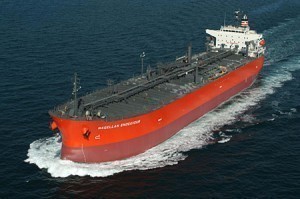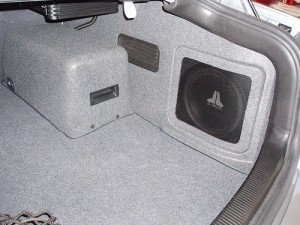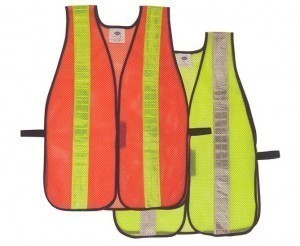How Big is a Tanker Ship?
Tanker ship sizes are based on their capacity.  The capacity is assessed by the deadweight metric tons (DWT). The biggest are the ULCC (Ultra Large Crude Carriers). Their storage is between 320,000 to 549,000 of DWT.
The capacity is assessed by the deadweight metric tons (DWT). The biggest are the ULCC (Ultra Large Crude Carriers). Their storage is between 320,000 to 549,000 of DWT.
Oil Tanker Dimensions
Next to the Ultra Large Oil Crude Carrier is the VLCC (Very Large Crude Carrier). Its DWT size is 160,000 to 319,999. Third biggest are the LRT (Large Range 2) oil tankers with a DWT of 80,000 to 59,999.
The LRT 1 (Large Range 1) oil tanker has a DWT of 45,000 to 79,999. Medium range tankers have a DWT of 25,000 to 44,999. The general all purpose types have a DWT of 10,000 to 24,999.
Tanker Ship Size Superlatives
During the 1940s, tankers were around 530 ft (162 m) long. Their capacity was only 16,500 DWT. Compare this with the typical ultra large crude tanker, which can reach 1,300 ft (400 m). As stated, their capacity can reach upwards of 500,000 DWT. The first oil tanker to carry more than 100,000 long tons was the Universe Apollo in 1979.
The biggest oil tanker ever built was the Seawise Giant. Developed by Oppama Shipyard of Sumitomo Heavy Industries, the ship was 1,504 ft long (458.45 m) with a DWT capacity of 564,763. The draft was 80.74 ft (24.6 m).
The ship was built with 46 tanks and 339,500 sq ft (31,541 sq m) of deck. The ship has been permanently moored since 2004.
The Biggest Active Tankers in the World Today
As far as tanker ship sizes go among active ships, the T1 supertankers are largest. There are four of them known as T1 Africa, T1 Oceana, T1 Asia and T1 Europe. All the ships were constructed between 2002 and 2003 at the behest of the Greek Steamship Corp.
Each of them has a capacity of 441,500 DWT. They are 1,247 ft (380 m) long and have a cargo 3,166,353 barrels. That is equal to 503,409,900 l.
Deadweight Statistics
As of 2005, 37% of the deadweight tonnages were comprised of oil tankers. From 325 million DWT in the 1970s, this increased to 960 million DWT. Combining all tanker ship sizes and tonnage, the total is nearly 73% of the planet’s entire fleet. 2.4 billion Metric tons of oil were moved in 2005 alone.
77% of this material was crude oil. The major loading ports are in Western and Northern Africa, Western Asia and the Caribbean. The discharge points are Japan, North America and Europe.
Oil Tanker Types
Basically there are two types; the crude tankers and the product tanker. The former transport and move crude oil. The product tankers transport petrochemicals.
Panamax ships refer to ships whose dimensions are limited by the Panama Canal. Their maximum sizes are as follows. Length: 995 ft (294 m); width: 106 ft (32.31 m); draft 39.5 ft (12.04 m) and air draft, 190 ft (57.9 m).
The growing demand for oil means tanker ship sizes will keep increasing. To this day, oil tankers remain the cheapest way to move oil around.





